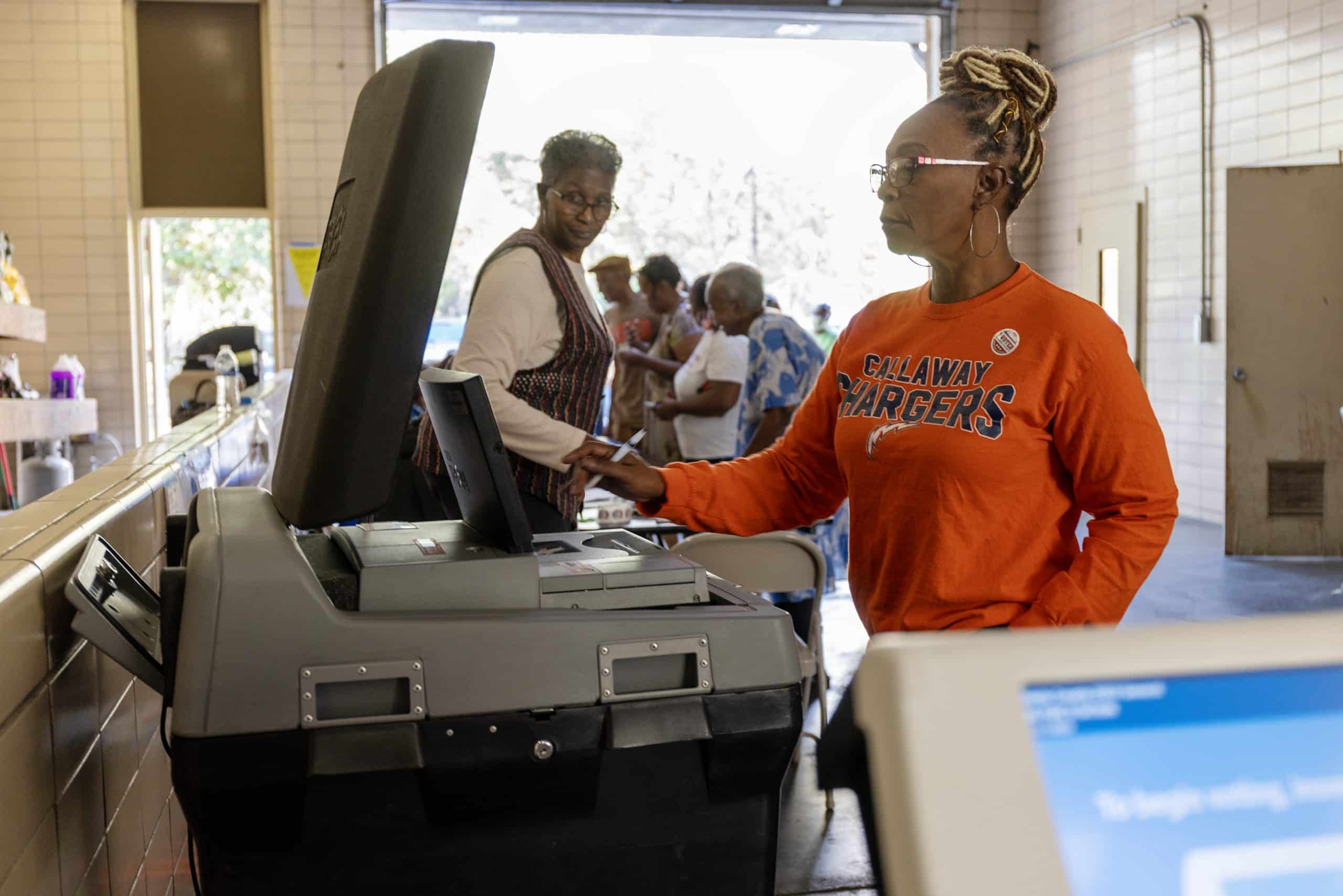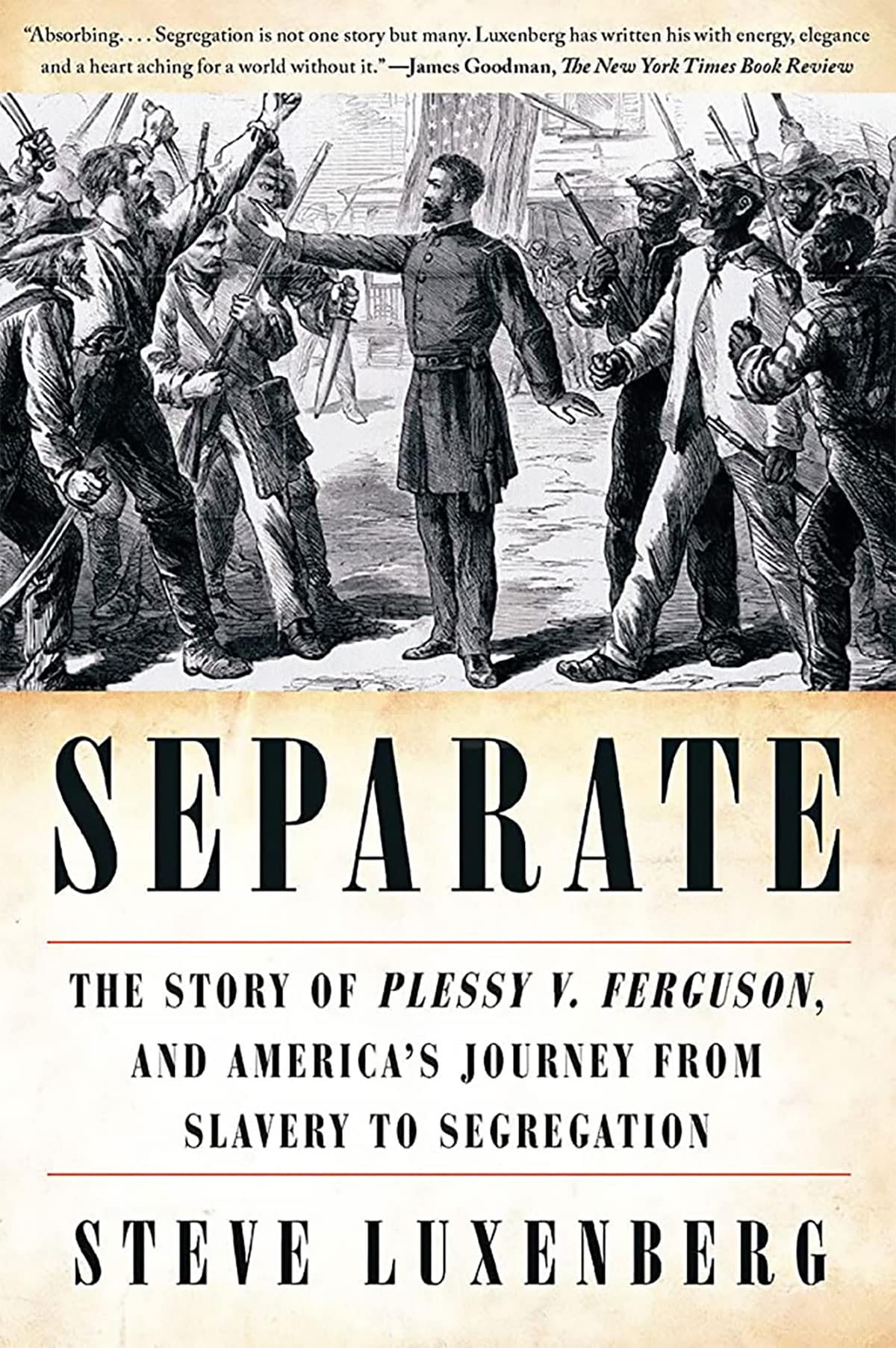Mississippi Today
Hinds County election officials say they sent wrong voter form to ballot-printing company

Hinds County election commissioners acknowledged in a public meeting on Monday that they sent the wrong document to the company that printed its ballots, resulting in several polling places not having enough ballots for voters on Nov. 7.
The commission, all of whom are elected Democrats, answered questions from a coalition of civil rights organizations on Monday about what went wrong during the statewide election and how those mistakes could be prevented in future elections. Each of the commissioners present at the meeting on Monday took responsibility for the mistake.
“It was a complete human error,” District 2 Commissioner RaToya Gilmer McGee said. “I hate that the citizens of Hinds County experienced it.”
During Mississippi's Nov. 7 general election, several Hinds County voting precincts ran out of ballots throughout the day. The county is majority Black, Mississippi's largest county and a Democratic Party stronghold.
People waited in line for hours to vote as local officials attempted to replenish ballots and deliver them to polling places. It's unclear how many people left without voting or decided not to travel to polling precincts because of the confusion from the shortages.
READ MORE: Hinds County ballot shortages cause legal mess on Election Day
State law dictates that county election commissioners supply enough ballots to each polling precinct. The commissioners told the coalition and the public at Monday's meeting that their mistake in sending the wrong documents mostly impacted “split precincts” in the county.
Split precincts exist when several political boundaries share a single polling place. Different types of ballots must be on hand at the polling precinct whenever there's a split precinct.
Before each election, the Hinds County Election Commission accesses statewide voter data to determine how many ballots should be distributed, but it sent the wrong voter data to the company it contracted with to print the ballots.
According to several commissioners, there are two types of polling precinct reports: a BP-008 and a BP-009. The BP-008 form discloses how many voters are registered at each precinct. The BP-009 shows how many different types of ballots are needed at each precinct.
Commissioner McGee said the commission sent the BP-008 form to the printing company, not the BP-009 form. When the commission submitted the wrong form, it caused the company to print an inadequate number of ballots for the split precincts.
While the commission acknowledged its mistake caused mass confusion during a competitive statewide election, McGee said better training from the Secretary of State's office could have prevented the issue.
“The training needs to be different,” McGee said. “As an incoming professional woman, I feel like it was not a great training.”
Secretary of State Michael Watson's office trains election commissioners in each of the state's 82 counties. Watson told Mississippi Today in a statement that his office is available to answer questions and will “gladly spend time training those who need additional help.”
“Heading into the 2023 election, all 82 counties received the same training and resources from our office,” Watson said. “No other county experienced the issues we saw in Hinds County.”
Statewide officials have already certified the results of the Nov. 7 election, but Hinds County must conduct an election on Nov. 5, 2024, for a U.S. Senate and the presidential election, which typically attract many voters.
Gov. Tate Reeves also called for a special election in Hinds County in November 2024 for voters to elect a Hinds County Court judge, a local election that could involve split precincts.
District 4 Commissioner Yvonne Horton told reporters after the meeting that she believes the commission can learn from its prior mistakes and conduct the 2024 general election without widespread ballot issues.
However, Horton was vague on what concrete steps the commission was planning to take to prevent the ballot printing error or similar errors from happening in the future.
When asked if the commission, for example, planned to implement an accountability system for someone to review the data the commission sent to a future printing company, Horton offered a conflicting answer.
“No one has said they are going to do that, but I can assure you we are going to do that,” Horton said of an accountability system.
The commission's next regular meeting will occur next month after a new slate of commissioners are sworn in for a new four-year term.
READ MORE: Judge extends Hinds County precinct hours after numerous ballot problems
This article first appeared on Mississippi Today and is republished here under a Creative Commons license.
Mississippi Today
On this day in 1896


MAY 18, 1896

The U.S. Supreme Court ruled 7-1 in Plessy v. Ferguson that racial segregation on railroads or similar public places was constitutional, forging the “separate but equal” doctrine that remained in place until 1954.
In his dissent that would foreshadow the ruling six decades later in Brown v. Board of Education, Justice John Marshall Harlan wrote that “separate but equal” rail cars were aimed at discriminating against Black Americans.
“In the view of the Constitution, in the eye of the law, there is in this country no superior, dominant, ruling class of citizens,” he wrote. “Our Constitution in color-blind and neither knows nor tolerates classes among citizens. In respect of civil rights, all citizens are equal before the law. The humblest is the peer of the most powerful. The law … takes no account of his surroundings or of his color when his civil rights as guaranteed by the supreme law of the land are involved.”
This article first appeared on Mississippi Today and is republished here under a Creative Commons license.
Did you miss our previous article…
https://www.biloxinewsevents.com/?p=359301
Mississippi Today
Renada Stovall, chemist and entrepreneur
Renada Stovall sat on the back deck of her rural Arkansas home one evening, contemplating life when she had a life-altering epiphany…
“I gotta get out of these woods.”
She heard it as clear as lips to her ear and as deep as the trees surrounding her property. Stovall's job as a chemist had taken her all over the country. In addition to Arkansas, there were stints in Atlanta, Dallas and Reno. But she was missing home, her parents and friends. She also knew, she needed something else to do.
“I thought, what kind of business can I start for myself,” said Stovall, as she watered herbs growing in a garden behind her south Jackson home. Some of those herbs are used in her all-natural products. “I know when I lived in Reno, Nevada, where it's very hot and very dry, there really weren't products available that worked for me, my hair, and my skin suffered. I've got a chemistry degree from Spelman College. I took the plunge and decided to create products for myself.”

In 2018, Stovall's venture led to the creation of shea butter moisturizers and natural soaps. But she didn't stop there, and in December 2022, she moved home to Mississippi and got to work, expanding her product line to include body balms and butters, and shampoos infused with avocado and palm, mango butter, coconut and olive oils.
Nadabutter, which incorporates Renada's name, came to fruition.

Stovall sells her balms and moisturizers at what she calls, “pop-up markets,” across the state during the summer. She's available via social media and also creates products depending on what of her ingredients a customer chooses. “My turmeric and honey is really popular,” Stovall added.
“The all-natural ingredients I use are great for conditioning the skin and hair. All of my products make you feel soft and luscious. The shea butter I use comes from West Africa. It's my way of networking and supporting other women. And it's my wish that other women can be inspired to be self-sufficient in starting their own businesses.”





This article first appeared on Mississippi Today and is republished here under a Creative Commons license.
Mississippi Today
On this day in 1954
MAY 17, 1954

In Brown v. Board of Education and Bolling v. Sharpe, the U.S. Supreme Court unanimously ruled that the “separate but equal” doctrine in Plessy v. Ferguson was unconstitutional under the 14th Amendment, which guaranteed equal treatment under the law.
The historic decision brought an end to federal tolerance of racial segregation, ruling in the case of student Linda Brown, who was denied admission to her local elementary school in Topeka, Kansas, because of the color of her skin.
In Mississippi, segregationist leaders called the day “Black Monday” and took up the charge of the just-created white Citizens' Council to preserve racial segregation at all costs.
This article first appeared on Mississippi Today and is republished here under a Creative Commons license.
-
SuperTalk FM6 days ago
Martin Lawrence making 3 stops in Mississippi on comedy tour
-
Our Mississippi Home5 days ago
Beat the Heat with Mississippi’s Best Waterparks
-
SuperTalk FM2 days ago
State auditor cracking down on Mississippians receiving unemployment benefits
-
Our Mississippi Home6 days ago
Charlie’s U-Pik: Opening Soon for the Summer Season
-
Mississippi News Video4 days ago
Jackson has a gang problem
-
Kaiser Health News5 days ago
Medicaid ‘Unwinding’ Decried as Biased Against Disabled People
-
Local News1 day ago
Family files lawsuit after teen’s suicide in Harrison County Jail
-
Mississippi Today3 days ago
On this day in 1950










































